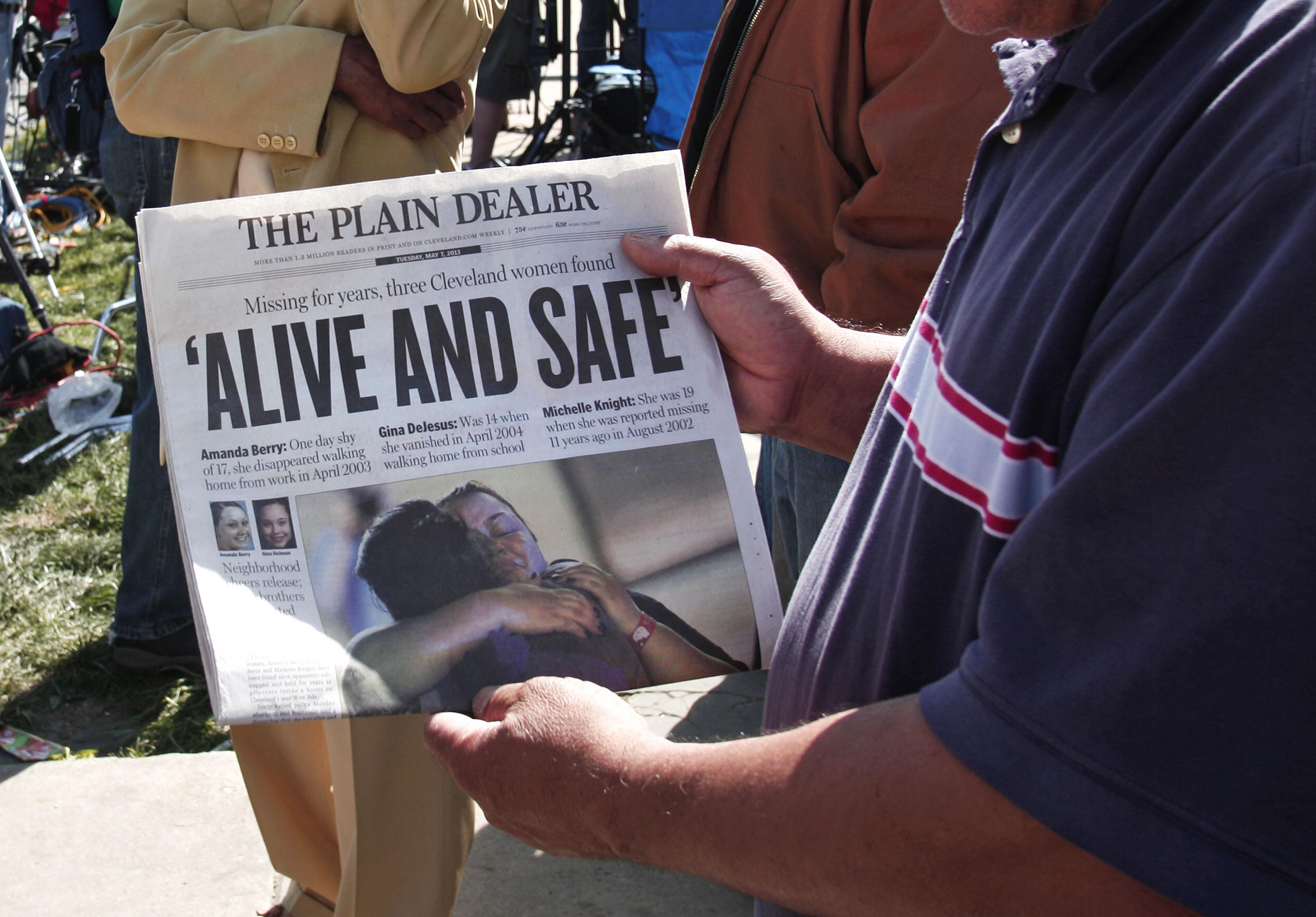Crime is Slate’s crime blog. Like us on Facebook, and follow us on Twitter @slatecrime.
For the past week, I’ve been riveted to the website of the Cleveland Plain Dealer, which has been my go-to source for reporting, context, and analysis on Ariel Castro’s alleged kidnapping of three women. National outlets, which lack regional knowledge and the bodies on the ground, can’t compete with local dailies on these sorts of stories. Just as the Boston Globe did with its blanket coverage of the Boston Marathon bombing, the Plain Dealer has outshone the competition with multiple updates a day that have helped outsiders understand what’s happening on Cleveland’s west side. From its continuously updated “Frequently asked questions” backgrounder about the Castro case to Robert L. Smith’s long, lovely feature contextualizing the women’s decade of captivity, the Plain Dealer’s collected output over the past week is a testament to the value of the daily regional newspaper in the digital age.
It’s also the paper’s swan song. This summer, the Plain Dealer will switch to a three-day-a-week home delivery schedule and lay off at least 53 members of its newsroom. Though the paper will continue to publish every day, don’t expect greatness from the non-delivery editions. Earlier this year, the Syracuse Post-Standard switched to a three-day-a-week delivery schedule. As Ryan Chittum at the Columbia Journalism Review has reported, the off-day versions are hardly local newspapers at all. The Post-Standard for Monday, April 29 “clocked in at 16 pages and had no original content on page one. At the top of the newshole on the left side of page one is an AP story the paper headlines ‘President jokes about aging and cute bangs.’ On the right is an AP brief on a stabbing in Albuquerque, 2000 miles away, in which no one was killed.”
The Post-Standard and the Plain Dealer are both owned by a company called Advance Publications. Advance also owns the New Orleans Times-Picayune, long the dominant daily in New Orleans. Last year, the Times-Picayune went to a three-day-a-week publication schedule, in what was billed as a shift-to-digital strategy—an odd move in a poor city with scant broadband penetration. The paper has since shed staff and readers, and ceded market share to the Baton Rouge Advocate, which hired away many of the Times-Picayune’s top reporters and editors and has made inroads in the New Orleans newspaper market. Just last week, the Times-Picauyne’s owners announced that that paper would revert to some sort of daily publication schedule. But the damage has been done.
Chittum at the Columbia Journalism Review (where, disclosure, I’m employed as an editor-at-large—though not for much longer!) has speculated that Advance’s strategy is to drive down costs at its newspapers to boost short-term profits before liquidating the print operations entirely in a few years’ time. I can’t say whether he’s right. I do know that the move has been disastrous for the Times-Picayune’s news department. New Orleans, crime-ridden and corrupt, needs a journalistic watchdog more than most cities, and the decimated, Web-focused Times-Picayune has shown itself unable to fill that role. “Stories where people of poverty talk about issues of importance seem almost nonexistent these days,” an ex-Times-Picayune reporter told Chittum.
The same will likely soon be true in Cleveland. “All of the announced changes are driven by our desire to adapt to market changes and to continue to serve the community as the leading source of news and information for years to come,” wrote the paper’s editor and publisher back in April, in a post titled “Adapting to better serve our community: a letter to readers.” The Plain Dealer can spin this decision however it likes, but it will inevitably result in less coverage of the issues and constituencies that need to be covered most desperately. By reducing its footprint in the community, the Plain Dealer will just end up further marginalizing groups that have historically been marginalized by news outlets: poor people, old people, minority groups. Their communities will get covered less, and—with the limited availability of the print product—they’ll be less likely to be able to read the coverage.
On Thursday, I wrote about how the decline of the local beat cop is in some ways responsible for the Cleveland Police Department’s failure to locate the missing women or to notice anything amiss at the house of Ariel Castro. If a police officer walks the same beat day after day, she gets to know the neighborhood and its residents, and she comes to realize when something’s amiss. By being present in a community, you develop contacts, intuition. Basically, you do a better job.
What’s true for cops is true for reporters. Community policing has vanished from Cleveland, a victim of budget cuts. Community reporting is the next to go.
